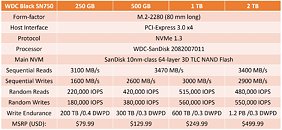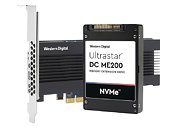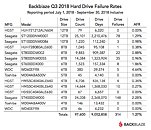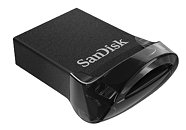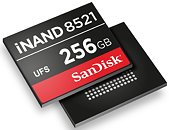
Western Digital's Award-Winning WD Blue SSD Goes NVMe
Western Digital Corp., a global data infrastructure leader, is accelerating the NVMe transition of value-PC storage by adding an NVMe model to its award-winning WD Blue solid state drive (SSD) portfolio, the WD Blue SN500 NVMe SSD. The new SSD delivers three times the performance of its SATA counterpart while maintaining the reliability the WD Blue product line is known for. For content creators and PC enthusiasts, the WD Blue SN500 NVMe SSD is optimized for multitasking and resource-heavy applications, providing near-instant access to files and programs.
Leveraging the scalable in-house SSD architecture of the highly acclaimed WD Black SN750 NVMe SSD, the new WD Blue SN500 NVMe SSD is also built on Western Digital's own 3D NAND technology, firmware and controller, and delivers sequential read and write speeds up to 1,700 MB/s and 1,450 MB/s respectively (for 500 GB model) with efficient power consumption as low as 2.7W. Demands on storage are continuing to grow and client workloads are evolving, the WD Blue SN500 NVMe SSD features high sustained write performance over SATA as well as other emerging technologies on the market today to give that performance edge.
Leveraging the scalable in-house SSD architecture of the highly acclaimed WD Black SN750 NVMe SSD, the new WD Blue SN500 NVMe SSD is also built on Western Digital's own 3D NAND technology, firmware and controller, and delivers sequential read and write speeds up to 1,700 MB/s and 1,450 MB/s respectively (for 500 GB model) with efficient power consumption as low as 2.7W. Demands on storage are continuing to grow and client workloads are evolving, the WD Blue SN500 NVMe SSD features high sustained write performance over SATA as well as other emerging technologies on the market today to give that performance edge.






